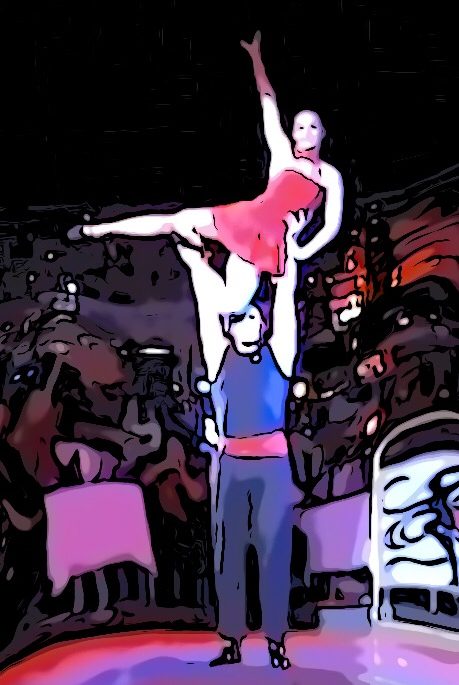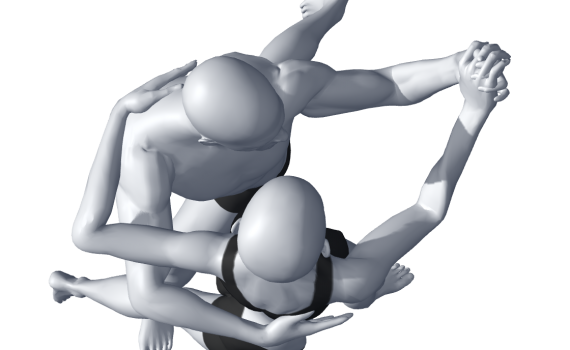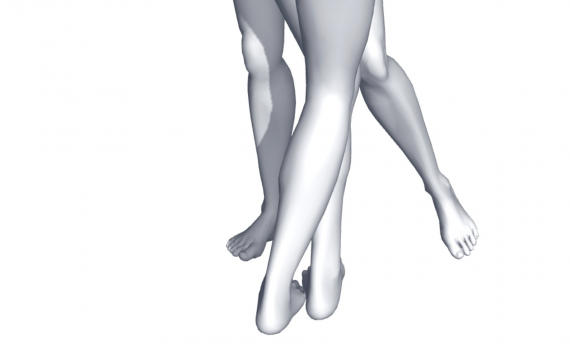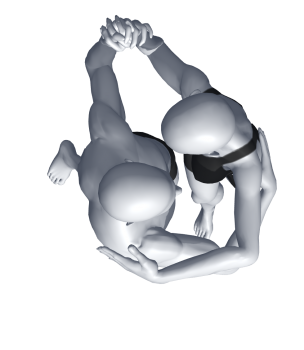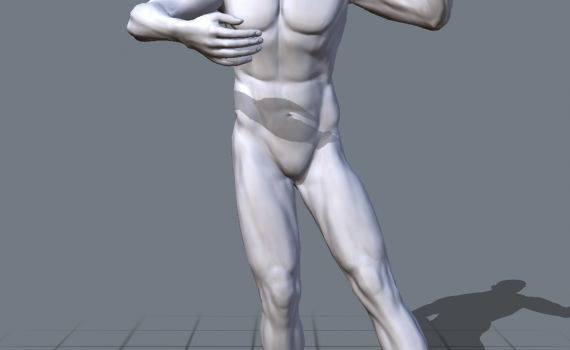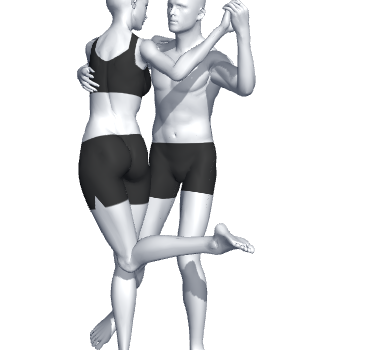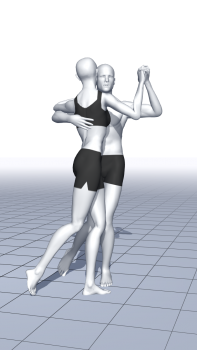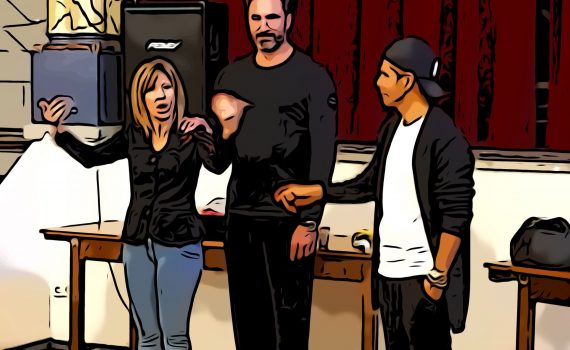The Sacada (= taken out, show, …) arises when one partner crosses the direction of movement of the other between his feet. During the Sacada, the center of gravity of both partners move is contrarotating. The one partner attacks, while the other dodges. This results in very strong body counter movements (= dissociations), which give this figure its special character. The knees are keeping together, because otherwise very quickly the impression of a peeing dog arises! Sensationally danced Sacada combinations interpret the staccato of the music with a slightly aggressive dialogue between the partners. It creates the impression of a […]
Kategorie: Moves
The Enrosque (= screw) is a figure to be danced in the inside circle and thus only stationary. It begins with crossed and parallel feet (cruz) that remain crossed during the rotation. Many coaches also teach the variant with feet crossing or dissolving during the rotation. As always, it is of course a personal matter of taste and in this case not mine. For me, the particular charm of the Enrosque is the rubber band effect (similar to the propeller of a model airplane) that arises when the body counter movement (= dissociation) dissolves during the Enrosque. An open leg […]
The Giro (= rotation) builds up like a compass. One partner is the compass mount, rotating stationary in the inner circle, the other partner rotating dynamically like the compass pointer in the outer circle around it. In principle, both partners in the outer circle may also dance dynamically around the common center. However, for me, the special charm of the Giro gets lost a bid. To understand the difference between dynamic and stationary rotation, let me briefly talk about the technique of the Pivot … The Pivot is basically a stationary turn on the foot. If the weight remains exactly […]
The Lapiz (= pin) is a classic rond, with the peculiarity that the foot (like a compasses) keeps in contact with the ground while the knee always points forward. The Tanguer@ fondles the floor with the Lapiz. Depending on the dancers emotion, the heel, the flat foot or just the toes may be used. Whoever wants to exhaust all possibilities, should intensively deal with the Adornos (= ornaments). Movement: The Lapiz starts from the knee2knee position. Then the free leg is stretched and guided in a large semicircle around the body, and afterwards angled to end up again in the […]
The cause for a Boleo (= slingshot) is the Rebote (= rebound). The step approach will be stopped and there is a weight transfer to the previous foot. The Rebote is danced with a body counter movement (= dissociation) that starts in the shoulder and continues like a wave until the foot. The free foot moves on until the end in the original dance direction, taking off and giving the impression of a whip. In advance to the Boleo, the Ocho is danced forward or backward. After the forward ocho, the boleo will cross the legs forwards. The angular momentum […]
The Salida (= Start) is a step pattern (basic pattern) of the tango that can be adapted to any rhythm: Lady starts with left forwards, man with right backwards… one (small) step against the dance direction (2 lane) one step sideways to the middle (with change from 2 to 3 lane) a step outside of the partner in dance direction (3 lane with dissociation) a step in the dance direction (3 lane) close (with weight shift and change from 3 to 2 lane) → the lady crosses to precede (comparable to the left turned Viennese waltz) a step in the […]
The Ocho (→ 8) results from the correctly danced forward or backward step → the caminata. As a reminder, there are 2 knee-to-knee positions directly behind each other in both forward and backward motion. These short moments are not held and should not produce an extension of the knees. The heel of the standing leg remains on the ground. In order to allow the free leg to swing through under the center of gravity, while keeping the knees close to each other, a small pivot on the footpad of the standing leg is required. The torso turns in advance and […]
“La Caminata” literally means “mountain hike”. However, a Grande Maestro from Argentina gets glowing eyes while using it and talks about how the tango step is “right” to perform.The hard step approach of the ballroom dancers (with a strong staccato in the footflick*) is not much appreciated in Tango Argentino. The step approach should be rather soft and correspond to the weight transfer of the danced emotion. Since the Tango Argentino does not specify any fixed step patterns, the rhythm is also freely selectable. I see the art of the tango therein is to musically shape the weight transfer and […]
How to define success? Well … Wikipedia’s recipe uses 2 ingredients, the goal and the implementation competence. Although everyone defines their own goals, for me in tango it is clearly the connection between woman, man and music. I remain aware of the division between man and woman, as Leader and Follower assume a role assignment, which personally I do not see. A woman always remains a woman, even if she takes the role of leadership. A division into painter and brush carries the same problem. I understand the implementation competence required by Wikipedia as the necessary “basics”: the posture, the […]
